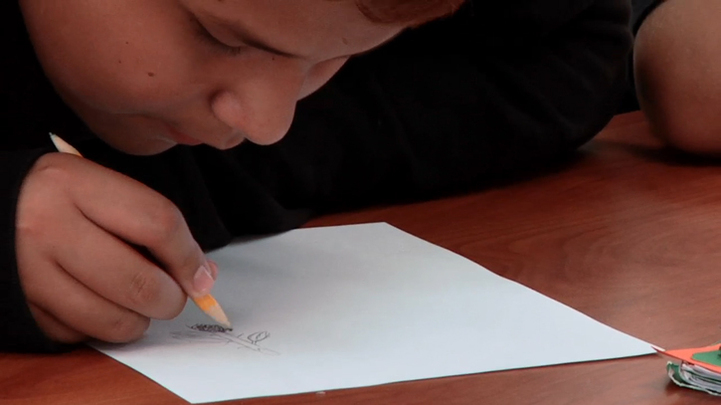In recent years, there have been concerted efforts to take arts out of the public schools to make more room for “academic” subjects. Arts offerings have dwindled to almost nonexistence in many districts, particularly those plagued by low standardized test scores as such assessments become the main measurement of student success. However, as initiatives try, and often fail, to engage students in learning and support academic achievement, more attention is being placed on identifying innovative methods of increasing learning. There have always been staunch supporters of arts education, but there are not too many places where you can find a thorough commitment to arts integrated core subject education. A few progressive districts have begun experimenting with such programs, in partnership with various arts education organizations and positive results have been published (Catterall, J. S., Dumais, S.A., & Hampden-Thompson, G. (2012). The Arts and Achievement in At-Risk Youth: Findings from Four Longitudinal Studies, Research Report #55. (12) Washington, DC: National Endowment for the Arts.; Upitis, R. (2011). Arts Education for the Development of the Whole Child. (17) Prepared for the Elementary Teachers' Federation of Ontario, Canada.; Walker, E. M., McFadden, L. B., Tabone, C., & Finkelstein, M. (2011). Contribution of Drama-Based Strategies. (18) Youth Theatre Journal, 25(1), 3-15.).
The Teacher Training: Arts as Literacy (TTAL) and Arts Integration Dissemination and Expansion (AIDE) projects both invite teacher leaders to participate in intense professional development institutes and partner with artist mentors over the course of a year to learn how to seamlessly integrate the arts into numeracy and literacy. Those teachers then function as teacher leaders who in turn train their colleagues in the skills and strategies in which they have become proficient. The project offers volunteer teachers at each grade level in an elementary school the opportunity to attend the summer institute and then partner with an artist mentor throughout the year in each of three arts modalities (theatre, visual arts, and dance). The artist mentors model lessons where math and literacy are taught through arts concepts. For example, if a class is working on shapes and lines and planes, they may work on a project that involves architectural collage (This is a truly engaging project, let me tell you! I had the opportunity to participate in a workshop, and the adults could hardly tear themselves away from their artwork after nearly two hours of concentrated effort). Or if the class is working on parts of a story (for example: plot establishment, journey, climax, denouement, resolution), they may learn how to illustrate these concepts in terms of movement and dance.
Teachers learn how to use common language to talk about what they are doing (e.g. being mathematicians and dancers) and use performance based assessments in addition to traditional assessments to gauge progress. Similarly, teachers move from scaffolded lessons alongside their mentor artist through co-teaching into self-designed lesson plans and exhibition lessons. Collaboration with other teachers occurs within schools and also at bi-annual professional learning community (PLC) meetings hosted by AI. Participating teachers are given access to a large resource library, which includes sample lesson plans for all grade level and core subject-art combinations, image libraries curated by local art museums, and materials for all sample lessons.
The Arts Impact projects are spread across Washington State, with concentrated centers in the Spokane corridor and the Seattle Public Schools school district. Additional projects have centered in Tacoma and Bethel school districts. AI has been working on the process of scaling such a system to meet the needs of far-removed rural school districts as well as those in tightly-packed metropolitan areas. While each model has its difficulties, these initiatives are teaching us about the process of core-arts integration. It is likely that we will see more implementation of similar models as Seattle rolls out its Arts Plan wherein every student in the Central Corridor will be ensured at least two hours per week of arts-oriented coursework starting in 2014. I, for one, am excited to see even more innovative efforts aimed at increasing student engagement in core academic subject areas through the use of conceptual and practical arts education.
Anyone up for a round of Pythagorean Pictionary?
Suzannah Calvery, Ph.D. Research Associate

Suzannah's research interests spread across supports for at-risk youth, linguistic development, alternative education, and cross-disciplinary education professional training.


